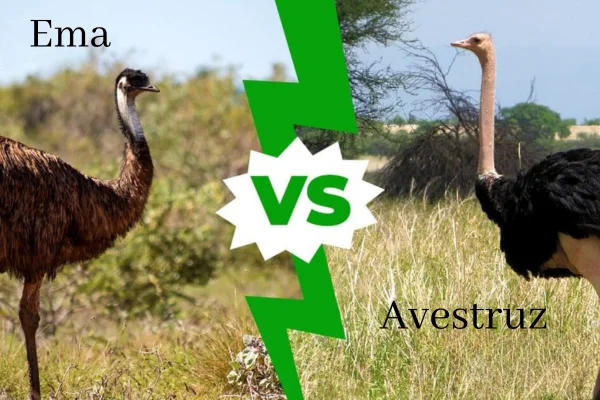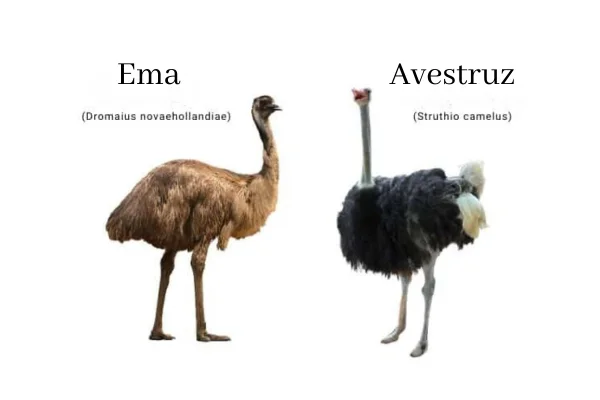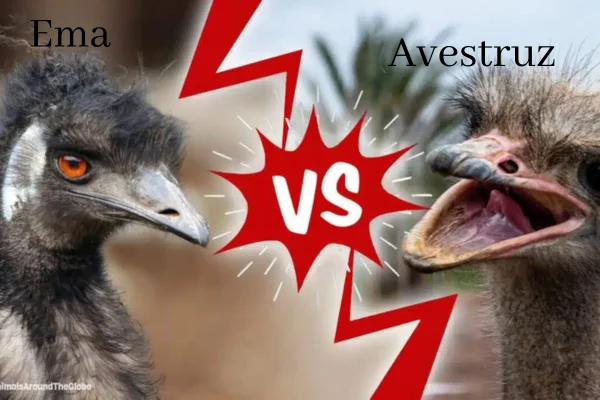Ostrich and Ema What's the Difference?
Unraveling the Differences Between the Ema and the Ostrich
Ostrich and Emu - What's the Difference? - When talking about giant, non-flying birds, two names often come to mind: the rhea and the ostrich. These birds, while appearing similar at first glance, have several distinguishing characteristics. This article will explore these differences, providing a clearer understanding of these impressive creatures.
Habitat and Geographical Distribution
One of the main differences between the rhea and the ostrich lies in their habitats and geographical distribution. Emus are native to South America, found mainly in Argentina, Brazil, Bolivia, Paraguay and Uruguay. They prefer open grassland and savannah habitats, adapting well to regions with low vegetation.
Ostriches, on the other hand, are native to Africa. They mainly inhabit savannah and semi-desert regions, spread across various parts of the continent, including South Africa, Kenya, Namibia and Ethiopia. The adaptation of these birds to Africa's arid conditions is remarkable, allowing them to survive in extreme climates.
Contents
Size and Appearance
When it comes to size, the ostrich wins by far. Ostriches are the largest living birds, reaching heights of up to 2.7 meters and weighing around 150 kg. Their long, strong legs are adapted for running at high speeds, reaching up to 70 km/h. The ostrich's neck is long and featherless, with a small head and large eyes, providing excellent vision.
Emus are smaller than ostriches, but they are still large birds. They can reach heights of up to 1.7 meters and weigh around 40 kg. Their legs are also powerful, but not as long as those of ostriches. Emus have a more robust body covered in gray or brown feathers, with a relatively smaller neck and head.

Behavior and Diet
The behavior and diet of these birds also differ markedly. Emus are omnivorous birds, feeding on a variety of plants, seeds, fruit and small insects. They have a more solitary behavior or are seen in small family groups, especially during the breeding season.
Ostriches, on the other hand, are mainly herbivores, feeding on leaves, seeds and flowers. They may occasionally eat insects and small vertebrates. Ostriches are social birds and are often found in groups, which offers protection from predators. These groups are led by a dominant female, who is responsible for leading the flock.
Reproduction and Parental Care
Reproduction and parental care also differ significantly between these birds. Male emus are mainly responsible for incubating the eggs and caring for the young. During the mating season, the male builds a nest on the ground, where several females lay their eggs. The male then incubates the eggs for around 40 days and takes care of the chicks after they hatch.
In ostriches, the dominant female of the group lays her eggs in a communal nest, which is dug out of the sand by the male. Both parents share responsibility for incubation, with the male usually incubating at night and the female during the day. Ostriches have a more cooperative parental care strategy, with both sexes involved in protecting and guiding the chicks.
Morphological differences
In addition to the differences in size, there are several morphological distinctions between the rhea and the ostrich. For example, rheas have three toes on each foot, while ostriches have only two. This difference in foot structure is related to the different locomotion patterns and habitats of these birds. Ostriches' feet, with two toes, are adapted for fast running in open terrain, while emus' three toes offer greater stability in grasslands and savannahs.
Plumes and Human Use
The feathers of the two species also differ and are used in different ways by humans. Ostrich feathers are famous for being used in fashion and decoration, due to their soft texture and showy appearance. These feathers are collected without harming the birds, making them a sustainable source of income in some regions of Africa.
Although emu feathers are also used, they don't have the same commercial value. However, emus are raised in some areas for their meat and oil, the latter of which is used in cosmetics and therapeutic products due to its anti-inflammatory properties.
Impact on the Ecosystem
Both birds play important roles in their respective ecosystems. Emus help disperse seeds and control insect populations, contributing to the health of South American grasslands. Their grazing behavior also helps maintain the balance of plants, preventing vegetation overload in certain areas.
Ostriches, meanwhile, play a similar role in the African savannahs. They help disperse the seeds of various plants and control vegetation, preventing overgrowth that can lead to forest fires. In addition, as large and visible birds, ostriches can serve as a kind of guard, alerting other animals to the presence of predators.

Conservation and Threats
Both emus and ostriches face conservation challenges. Habitat loss due to agricultural and urban expansion is a common threat to both species. In addition, poaching and egg collection can negatively impact their populations.
Conservation efforts include the creation of protected areas and captive breeding programs. For emus, education and awareness-raising initiatives about the importance of the species for local ecosystems are fundamental. For ostriches, the promotion of sustainable management practices on ostrich farms helps to balance commercial demand with the conservation of the species in the wild.
Conclusion - Ostrich and Ema What's the Difference?
Although the rhea and the ostrich may seem similar at first glance, the differences between them are vast and fascinating. From their distinct habitats to their physical and behavioral adaptations, these birds offer a remarkable example of the diversity of animal life. Understanding these differences not only enriches our knowledge of biodiversity, but also highlights the importance of conservation efforts to protect these impressive creatures and the ecosystems they are part of.
Observing and studying these birds in their natural habitats continues to reveal valuable information, contributing to the preservation and appreciation of these unique species. May we continue to admire and learn from the rhea and the ostrich, recognizing their irreplaceable contributions to nature.








